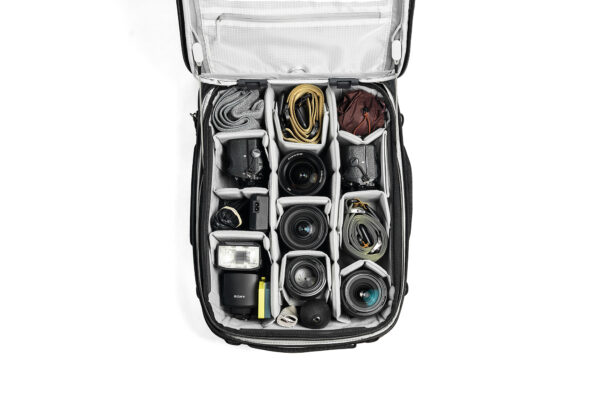When shooting an image, we’re also telling a story to the audience. It’s our job to tell them where to look and direct their attention to the key elements of the picture. There are many tools we can use to tell the “story” of the images. One of these tools is known as depth of field.
Are you ready to unleash this powerful device and reach new heights in your photographic abilities? Let’s embark on this insightful adventure, together.
What is the depth of field in photography?
Simply put, depth of field is how much your image is in focus. More precisely put depth of field is the distance in an image where objects appear “acceptably in focus” or have a level of “acceptable sharpness”.
Why use depth of field in photography?
One of the best tools a photographer can use to help capture the viewer’s attention is to control the amount of images that are in focus where you want them to be. For example, photographers typically use smaller lens apertures such as f/11 or f/16 when shooting landscapes so that everything is in focus.
However, we can create layers in our image by keeping only parts of the image in focus. If some of our foreground objects are out of focus, they will add depth to the image; Visitors will think they are browsing the main content page. To achieve this effect, shoot at a wide lens aperture.
Deep vs shallow depth of field: what’s the difference?
A deep depth of field is defined as an image with a very large zone of acceptable sharpness. Landscape photography, where we often want to reveal every last detail in the image, is a popular use case for deep depth of field (DoF) images, which are usually crisper from front to back.
On the other hand, some images have a very small zone of focus, called a shallow depth of field. Photographers use this effect, which is particularly popular in portraiture, to highlight their subjects while avoiding distracting background elements.
What factors affect depth of field?
Three factors affect depth of field. These are given below:
- Aperture
- Camera-to-subject distance
- Focal length
When we understand these factors, and the camera settings that control them, we’ll be able to use this photographic effect to increase depth of field, improve image quality, toggle between sharp focus and soft focus, and generally bring more variety.
How does the aperture affect the depth of field?
It is a dynamic character, adjusting its size to control the amount of light entering the camera. This is expressed as an ‘aperture value’ such as f/2.0, f/2.8, f/5.6, etc.
Here’s the twist: a larger aperture (small values like f/2) narrows the depth of field, focusing on a specific subject while blurring the background, ideal for vivid portraits.
Conversely, a small aperture (large values like f/11) expands the depth of field, bringing both foreground and background into focus, perfect for landscapes.

85mm, f/2.8
How does camera-to-subject distance affect the depth of field?
The distance between your camera and your subject is known as camera-subject distance. The shorter the camera-subject distance the shallower the depth of field, or put another way, the closer you are to your subject.
This factor, though, needs to tread carefully since moving nearer to or further from the subject can affect its size within the frame.
How does focal length affect depth of field?
The focal length of a camera lens contributes to the depth of field: a long focal length corresponds to a shallow depth of field, and a short focal length corresponds to a long depth of field.
Generally, a wide-angle lens has a greater depth of field than a telephoto lens, which can provide an impressive focus distance but is sometimes more limited in options. On the other hand, a zoom lens offers multiple focal distances and thus can perform a wide array of photographic tasks.
How to use depth of field in photography?
Here’s a step-by-step guide to help you achieve the depth of field you want:
Step 1: Choose Aperture Priority or Manual mode
Select aperture priority or manual mode on your camera, as these modes allow you to control aperture and depth of field.
Step 2: Determine the depth of field you want
Determine whether you want a shallow or deep depth of field by examining the scene carefully. The optimal depth of field is shallow if the background is distracting.
Step 3: Adjust aperture, subject distance, and focal length
To achieve a shallow depth of field, use a long lens, set the aperture as large as possible, and get as close to the subject as possible. For great depth of field, use a wide-angle lens, face away from the subject, choose a small aperture, and focus on one-third of the scene.
Step 4: Use depth of field preview
Many cameras have a depth-of-field preview button that lets us see the actual depth-of-field effect in real time before taking the picture.
Step 5: Check the depth of field
Check the image on the camera’s LCD screen after shooting to ensure the depth of field is accurate. Retake any necessary shots before the lighting changes.
Conclusion
We can improve our photographic abilities and get the desired depth of field effect in our shots by using these techniques. Learn more about photography at my blog!







